From student
(Difference between revisions)
|
|
| Line 15: |
Line 15: |
| | | | |
| | by Christian Norberg-Schulz, "Genius Loci Towards a phenomenology of architecture" | | by Christian Norberg-Schulz, "Genius Loci Towards a phenomenology of architecture" |
| | + | |
| | ---- | | ---- |
| | {| style="color:black; background-color:white;" width="500px" cellpadding="0%" cellpadding="2%" cellspacing="5" border="0" | | {| style="color:black; background-color:white;" width="500px" cellpadding="0%" cellpadding="2%" cellspacing="5" border="0" |
| Line 22: |
Line 23: |
| | ---- | | ---- |
| | <br>The senses operate at different distances from the body | | <br>The senses operate at different distances from the body |
| − | <br>An understanding of this principle is critical to any | + | <br>An understanding of this principle is critical to any proposal dealing with intimacy. |
| − | <br>proposal dealing with intimacy.
| + | |
| | | | |
| | |} | | |} |
| Line 53: |
Line 53: |
| | | style="width: 300px;background-color:white;" | '''Gathering vs. Isolation Space''' | | | style="width: 300px;background-color:white;" | '''Gathering vs. Isolation Space''' |
| | ---- | | ---- |
| − | <br>Concave or "Sociopetal" spaces | + | <br>Concave or "Sociopetal" spaces encourage gatherings based on their geometry. |
| − | <br>encourage gatherings based on their geometry.
| + | |
| | <br>The opposite is true for "Sociofugal" spaces. | | <br>The opposite is true for "Sociofugal" spaces. |
| | |} | | |} |
Revision as of 15:58, 12 October 2011
Go Back
We interpret the following ideas or theories as relevant to the experience of intimacy.
A discussion on the significance of this research will follow in Phase II.
Phenomenological Contributors
"...continued search for a concrete understanding of the environment...The concept of existential space is devided in the complementary terms "space" and "character", in accordance with the basic psychic functions "orientation" and "identification"...."Thing, order, character, light and time are the basic categories of concrete natural understanding."
by Christian Norberg-Schulz, "Genius Loci Towards a phenomenology of architecture"
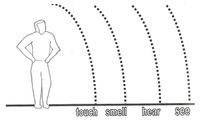
|
Sense of Space
The senses operate at different distances from the body
An understanding of this principle is critical to any proposal dealing with intimacy.
|

|
Sense of Space
Three conditions of defining place.
|
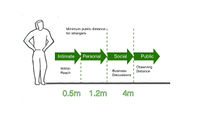
|
Human Perceptions of Nearness
Distance as a human spatial indicator
|
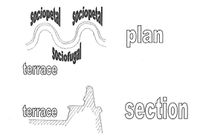
|
Gathering vs. Isolation Space
Concave or "Sociopetal" spaces encourage gatherings based on their geometry.
The opposite is true for "Sociofugal" spaces.
|
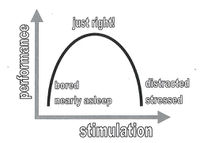
|
Stimulation vs. Performance
different conditions of feeling
|
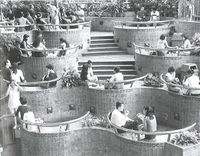
|
Border vs. Communication
encourage communiacation
|
Psychological Contributors
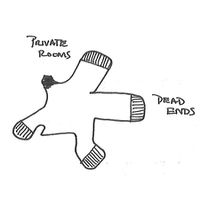
|
Publicly Accessible Private Space
Everyone needs privacy at some point.Therefore, small private spaces should be provided in any public space that hopesto be successful.
|
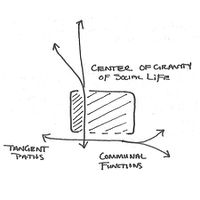
|
Centered Common Areas
Social space is a need of all groups.
By providing common areas near smaller alcoves.
|
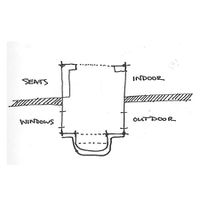
|
Entrance Room
The threshold is a powerful communcation tool. The act of entering and exiting a not the same, thus should each be treated with respect.
|
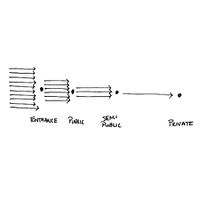
|
Intimacy Gradient
Space should be organized in relation to increasing privacy the deeper one progresses toward the center
|
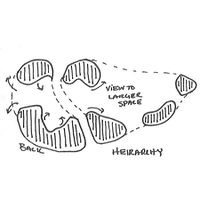
|
Hierarchy of Open Space
Provide protection to the rear and a view to a larger open space. This will encourage gatherings and it disarms the natural human fear of being surprised.
|










